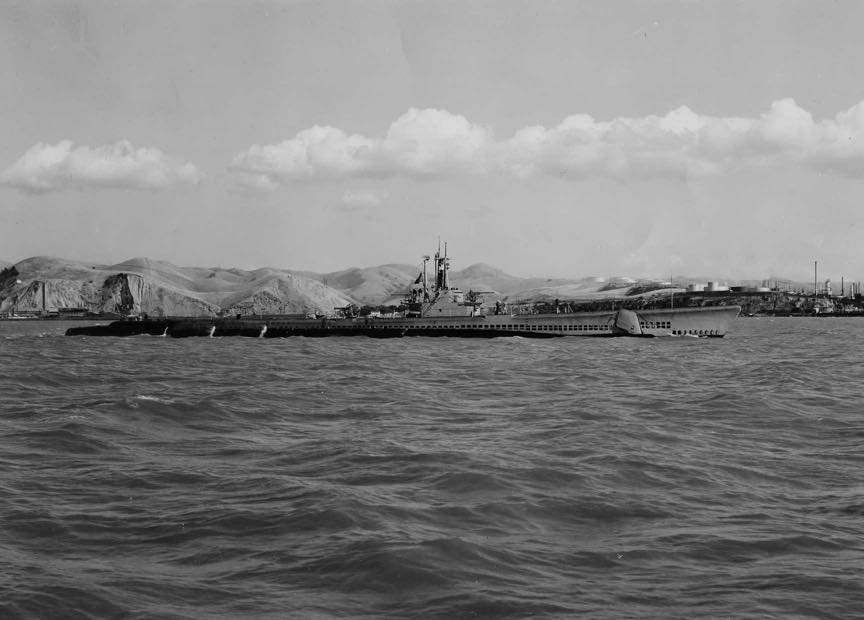Stickleback SS-415

Stickleback
(SS-415: dp. 1,525 (surf.), 2,415 (subm.), 1. 311'8"; b. 27'3"; dr. 15'3"; s. 20+ k. (surf.), 8.75 k. (subm.); cpl. 81; a. 10 21 tt., 1 5, 1 40mm., 1 20mm.; cl. Balao)
Stickleback (SS-415) was laid down on 1 March 1944 by the Mare Island Navy Yard, Vallejo, Calif.; launched on 1 January 1945; sponsored by Mrs. John O. R. Coll; and commissioned on 29 March 1945 Comdr. Lawrence G. Bernard in command.
Stickleback completed outfitting on 26 May and held her shakedown cruise off the California coast. She reported to Commander, Submarines, Pacific Fleet, for duty on 21 June. More modern equipment was installed at Pearl Harbor; and, on 2 August, she arrived at Guam, where she held sea trials for a few more days. She began her first war patrol on 6 August when she departed for the Sea of Japan. She arrived there the following week and began patrolling. However, the atomic bombs had been dropped on Hiroshima and Nagasaki and it was believed the war would end shortly.
Stickleback had only been in the patrol area for two days when the cease-fire order was passed. She remained in the area and, on 21 August, sighted two bamboo rafts containing 19 survivors of a freighter which had been sunk 10 days before by Jallao (SS-368). They were taken on board for 18 hours given food, water, medical treatment, and set afloat again a short distance from one of the Japanese islands.
Stickleback returned to Guam on 9 September and sailed for the United States the next day. She arrived at San Francisco on 28 September as a unit of Admiral Halsey's 3d Fleet. She participated in the Navy Day celebration in October and, on 2 January 1946, made a voyage to Pearl Harbor. She was decommissioned, on 26 June 1946, at Mare Island and attached to the Pacific Reserve Fleet.
Stickleback was recommissioned on 6 September 1946 and served at San Diego as a training ship until entering the Mare Island Naval Shipyard on 6 November 1952 for conversion to a snorkel (Guppy IIA) type submarine. The ship was back at sea on 26 June 1953 and joined Submarine Squadron 7 at Pearl Harbor.
Stickleback supported the United Nations Forces in Korea from February to July 1954 when she returned to Pearl Harbor. For the next four years, she participated in training operations and the development of both defensive and offensive submarine tactics. On 28 May 1958, Stickleback was participating in an antisubmarine warfare exercise with Silverstein (DE-534) and a torpedo retriever boat in the Hawaiian area. The exercises continued into the afternoon of the next day when the submarine completed a simulated torpedo run on Silverstein. As Stickleback was going to a safe depth, she lost power and broached approximately 200 yards ahead of the destroyer escort. Silverstein backed full and put her rudder hard left in an effort to avoid a collision but holed the submarine on her port side.
Stickleback's crew was removed by the retriever boat and combined efforts were made by Silverstein, Sabalo (SS-302), Sturtevant (DE-239), and Greenlet (ASR 10), to save the stricken submarine. The rescue ships put lines around her, but compartment after compartment flooded and, at 1857 hours on 29 May 1958, Stickleback sank in 1,800 fathoms of water.
Stickleback was struck from the Navy list on 30 June 1958.
